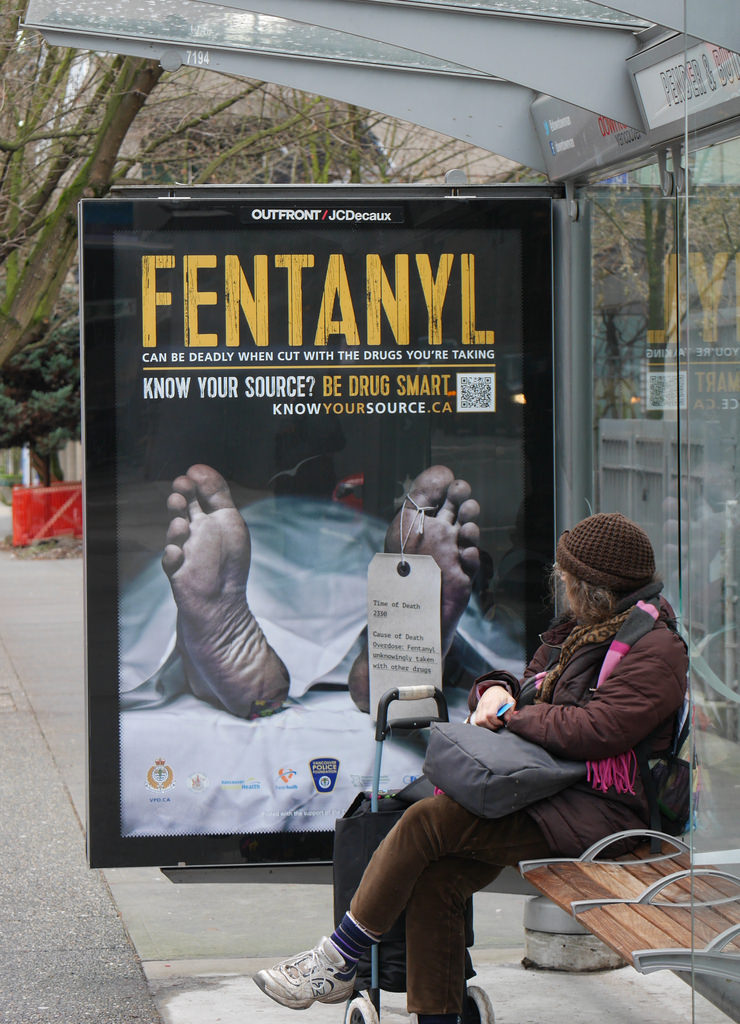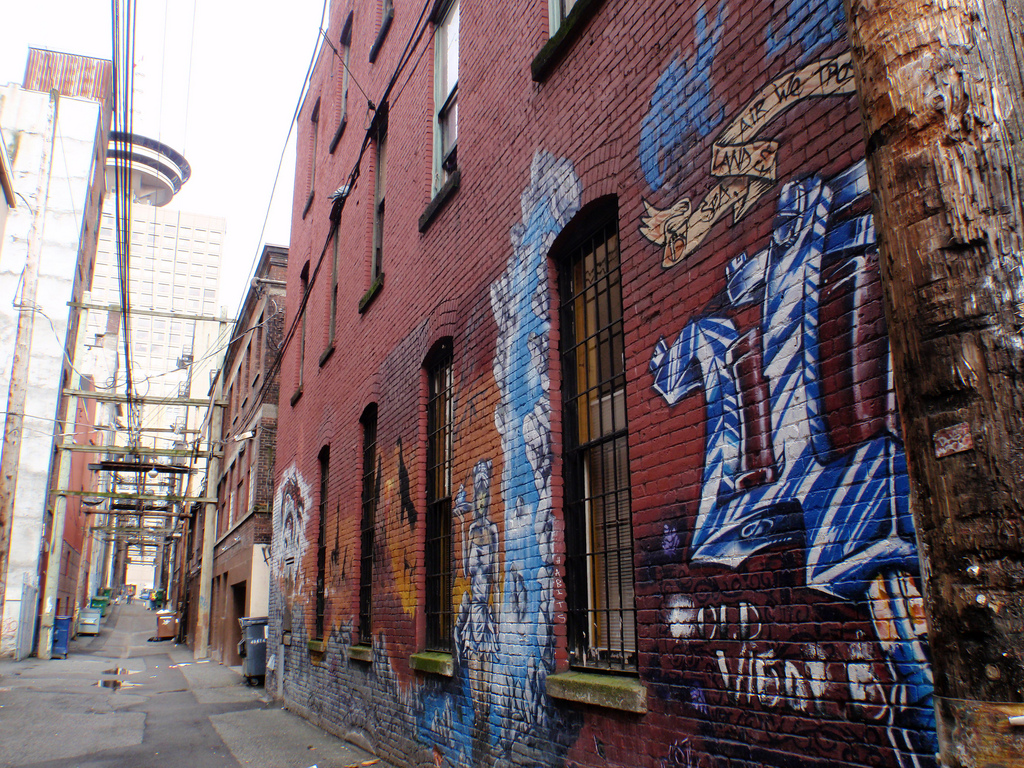On 14th April 2016, a Public Health Emergency was declared in British Columbia in response to the opioid overdose crisis. Fentanyl, an opioid reportedly 100 times stronger than morphine, is at the centre of the epidemic, causing fear, panic, and ultimately deaths. Cities across Canada have been affected but British Columbia has borne the brunt of crisis.
I work for Drugaid Cymru, the largest substance misuse provider in Wales and sit on the “Enhanced Harm Reduction Centre’s steering group”, which is looking at the potential development of Medically Supervised Injecting Centre’s in Wales, in response to the growing number of both non-fatal and fatal drug overdoses on our streets. I undertook the Winston Churchill Memorial Trust fellowship to research the policies and procedures attached to setting up such facilities, which has taken me across North America, as well as parts of Europe. As part of my research I also learnt about the various responses by different areas, especially Canada, to the ongoing threat of fentanyl use. This article is sharing what was told to me at numerous meetings with key individuals in Vancouver, Canada.
To understand the impact fentanyl is having on British Columbia, it is important to highlight that in the first five months of 2017, fentanyl was detected, whether alone or in combination with other drugs, in 78% of all illicit drug related deaths. Overall, drug related deaths have sharply increased since 2011, from just under 300 deaths per year, to nearly 1000 in 2016. However, during this time, drug related deaths, excluding fentanyl, has remained relatively stable.
One would hope that the current rate of fatalities will start to slow down, but given fentanyl represents the largest proportion of opioids analysed within seized samples, and that most of the heroin samples contained fentanyl, or an analogue, there is little hope that the 2017 figure will start to stabilise. A Fentanyl Urine Screen Study in 2015 analysed 242 samples taken from 17 harm reduction sites throughout British Columbia. Seventy participants tested positive for fentanyl, however nearly three quarters of these individuals reported not having used fentanyl in the last three days. This is a pivotal insight into use of the drug, as a considerable proportion of fentanyl used within the province is potentially unintentional. This leads to great concern among users, peers and professionals as unintentional use provides the optimal scenario for an overdose.
The British Columbia Centre for Disease Control (BCCDC) has responded to this crisis by coordinating a range of harm reduction initiatives within the province. BCCDC provide up to 476 distribution sites with naloxone, the opioid overdose antidote, and drug paraphernalia including clean injecting and smoking equipment. All emergency services carry naloxone, especially as the fire department tend to be the first emergency service on the scene of a drug overdose, purely due to their availability, compared to the excessive demand upon the paramedics and police. British Columbia rolled out their take home naloxone program in 2012 and since then, 10,000 kits have been distributed. What brings this statistic into significance, if it didn’t already, is that over half of those 10,000 kits were reported to have been used to reverse an overdose in 2017. This may be due to a variety of reasons, from more naloxone needed to reverse a fentanyl overdose, more people in contact with services or just that there are just more overdoses occurring.
Within the province, Victoria, Surrey and Vancouver occupy the top 3 spots where fatal illicit drug overdoses occur. In all three areas, Medically Supervised Injecting Centres and/or Overdose Prevention Sites (OPS) operate or have been approved. Insite was North America’s first legal Medically Supervised Injecting Centre. It opened in 2003 and is located in Vancouver’s Downtown Eastside. It operates on a harm-reduction model and offers up to thirteen separate booths, where people can inject their substances. Back in August 2016, Insite piloted drug-testing services, which found 86% of drugs checked contained fentanyl. Since the turn of 2017, there have been over 75,000 visits to Insite where people have injected substances from heroin to methamphetamine. Many have overdosed while visiting Insite, yet none of these have been fatal.
Downtown Eastside in Vancouver is where the current epidemic is concentrated and many OPSs were opened after the Minister of Health called for their establishment, in response to the increasing amount of 911 overdose calls and subsequent fatalities on the streets of Vancouver. OPS can be described as pop up consumption rooms, set up on a temporary basis, without legal exemption, to help deal with the increasing amount of overdoses, and consequently reduce the amount of fatal episodes.
Most are open more than 12 hours a day and can see up to 500 visits per day, matching current daily visits at the more medically supervised facility, Insite. OPSs are facilitated by a mixture of paid staff, volunteers and drug using peers, with many offering additional services, such as clean equipment and an hygienic environment to use substances. The Maple OPS at 117 E. Hasting Street deliver a “Spikes on Bikes” initiative, providing clean injecting equipment, naloxone and a witness service to those who use substances on the streets. VANDU, an organisation whose board of trustees consists of former and current drug users, provide daily support groups, including one for people who consume illegal alcohol or alcohol from untraditional sources, such as hand sanitisers. An all-women’s OPS, Sister Space, has also recently opened in Vancouver, based on local need and surveys completed at one of the world’s sole women-only consumption rooms, RAGAZZA in Hamburg. Eighty percent of clients at RAGAZZA reported they felt safer and more comfortable among people of their own gender. Such facilities then allow for more concentrated work based on the needs and care of women who not only use drugs, but also work as sex workers too.
The establishment of these OPSs, in Vancouver particularly, came about in response to rising illicit drug fatalities and Emergency Departments being overrun with overdose victims. However, many would suggest that the current opioid crisis is situated away from the public eye and Downtown Eastside, as the majority of fatalities during this epidemic are occurring indoors and in peoples own private residences in the suburbs of Vancouver. The challenge of reducing the amount of people using indoors alone, is a difficult one and the development of effective solutions are ongoing.
OPSs are just one of many responses to this epidemic in Vancouver. Others include heroin assisted treatment via the Providence Crosstown Clinic, the only facility to offer such services in North America. Another is the ‘bad dope’ initiative, whereby people can report overdoses that show unusual symptoms via text. This information would then be passed on to Vancouver Coastal Health staff immediately, and they in turn will warn various individuals about potentially contaminated drugs.
BCCDC also coordinate the ‘Facility Overdose Response Box Program’, a scheme created to provide community based organisations, who work with people at risk of an opioid overdose, with boxes containing multiple doses of naloxone. Such supplies are free of charge to these providers and criteria states that if you are to be a registered site for this program: overdose drills must be regularly completed, an overdose response policy developed, a training plan created, and support made available to employees following naloxone administration, all aimed at maintaining staff welfare and competencies. Such schemes have allowed not-for-profit hotels, that house known drug users, to be community naloxone champions, ensuring that if the worst was to happen during an opioid taking experience, naloxone shouldn’t be too far away.
One other response to this crisis has been a national one, with the passing of the Good Samaritan Drug Overdose Act 2017. This law has been introduced to reduce the amount of people not calling the emergency services when at the scene of an overdose, due to fear of being arrested. Under this law, anyone at the scene of an overdose cannot be charged with possession of an illegal substance and would not be charged for breach of probation or parole relating to drug possession. Such laws are currently in place in various states within United States of America, yet are vacant within UK legislation. Many service users openly disclose not calling 999 in the event of an overdose, because of the anxiety of police presence.
There are many things the UK can learn from its Canadian counterparts, as well as other countries, in relation to progressive drug policies. The UK once again hit record levels of drug-related-deaths in 2016 and in August 2017, the NCA warned that at least 60 deaths in the past eight months had been linked to fentanyl. Yet the UK Government seems unfazed as it maintains its stance that current drug policies are working. The establishment Medically Supervised Injecting Centres could be one part of the jigsaw to help deal with the continual rise of drug-related-deaths. The UK Government has stated that it has no plans to introduce Medically Supervised Injecting Centres, but their position does at least give local powers the space to explore the establishment of such facilities, and we must grab this opportunity with both hands. Many, if not all, would wish that we didn’t have to have these conversations; however, reality dictates that we must. We can put laws in place, such as a medical amnesty, to help curb the overdose death rates in the UK, as well as establish facilities where people can consume their drugs in a clean and supervised environment. Establishing alternative policies may not be easy and straight forward, but we must do it for the 3,744 who tragically passed away from substance use in 2016, and for those before them.
Rob Barker-Williams works in Swansea for Drugaid Cymru and is currently undertaking a Winston Churchill Memorial Trust Fellowship, that has taken him to Canada, USA, Denmark and Germany, exploring the policies and processes attached to setting up a Medically Supervised Injecting Centre. Tweets @RobBarkerW



